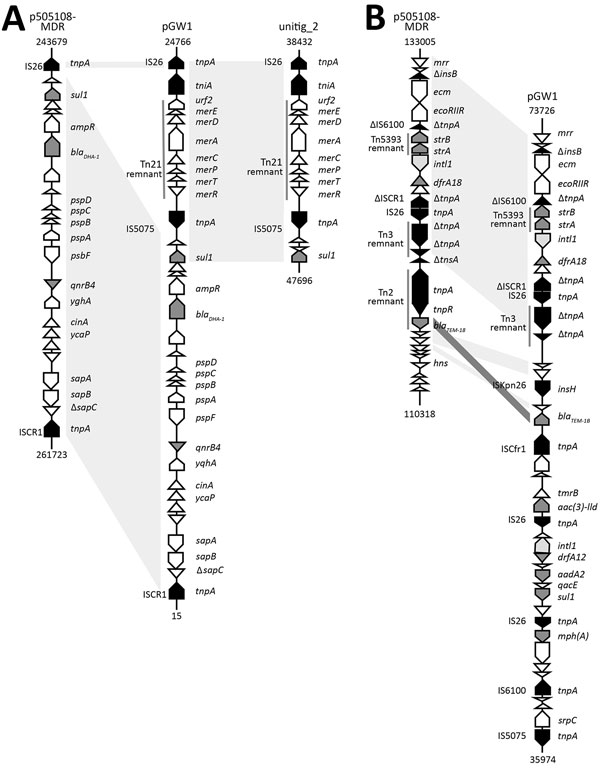Volume 24, Number 11—November 2018
Research Letter
Novel Multidrug-Resistant Cronobacter sakazakii Causing Meningitis in Neonate, China, 2015
Figure

Figure. Analysis of resistance plasmid pGW1 in Cronobacter sakazakii sequence type 256, isolated from neonate with meningitis, China, 2015, showing genetic organization of major drug-resistance determinants in pGW1, along with its structural comparison with that of p505108-MDR. The blaDHA-1 region (A) and multidrug-resistance region (B) of plasmid pGW1 are compared with those of plasmid p505108-MDR, unitig_2, or both. Black indicates genes encoding transposase, light gray indicates genes encoding integrase, dark gray indicates genes encoding drug resistance, and white indicates other genes. A few hypothetical genes with nucleotide sequences <200 bp are not shown. Shading denotes regions of homology (>95% nt identity); light gray shading indicates same orientation, and dark gray shading indicates reverse orientation. Numbers indicate nucleotide positions within the corresponding plasmids.
1These authors contributed equally to this article.